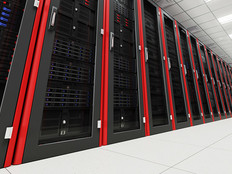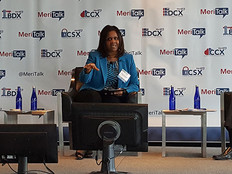Software-Defined Data Centers Offer Feds a Powerful Storage Solution
Federal IT officials are starting to appreciate the benefits of software-defined data centers, as software can now be used to manage many of the IT operations that hardware used to handle.
A survey from earlier this year sponsored by Dell EMC found that federal IT leaders are far along in their adoption of software-defined data centers. (SDDCs are data centers in which hardware components are virtualized, delivered as a service and managed by software.) As FedTech reported earlier this year, the survey found that feds think SDDCs can increase agency flexibility, agility and efficiency.
Nearly two-thirds of survey respondents (64 percent) say their organization has deployed software-defined solutions, while 85 percent report progress adopting SDDCs. Survey respondents say setting up SDDCs was more of a priority than other IT modernization efforts.
The Advantages of Software-Defined Data Centers
What do feds see as the positive aspects of SDDCs? The survey found that 58 percent of respondents say agility and flexibility were important drivers of SDDC adoption, and 53 percent cite additional efficiencies.
Additionally, respondents say simplifying management processes (41 percent) and reducing costs (38 percent) were also important considerations.
Software-defined networking and software-defined storage (SDS) are rapidly changing the way federal data centers are built and operated.
Storage growth has proved to be a major hurdle for many agencies, says Gerry Seaman, director for hybrid cloud at Intel. SDS solutions provide an answer for many of the difficult questions that IT leaders face about how they’ll handle the massive growth in data that agencies must store and use, especially as the adoption of sensors and other elements of the Internet of Things continues.
SDS lets IT leaders pool storage resources so they can be used flexibly to meet emerging needs. This helps avoid storage silos, which can hamper agility.
Effective storage, whether in the cloud or on-premises, provides organizations with easy access to their data. This ready access has become essential to many agencies that employ analytics to take advantage of the massive amounts of data they create and compile.
Data Center Security Challenges Remain
As they move workloads to the cloud and deploy advanced technologies to simplify operations, federal data center operators still face many serious challenges.
Security is perhaps the most pervasive issue that most agencies face, and the threat of ransomware has become nearly epidemic. A recent report from Beazley, a provider of data breach response insurance, states that ransomware attacks quadrupled in 2016 and are expected to double again in 2017. Bill Weaver, CDW vice president for advanced technologies, says data center operators are making security a part of every conversation they have.
Maintaining an effective IT staff is another challenge, Seaman says. As agencies strive to attract and retain talented IT professionals, they also must figure out how to best use the staff on hand.
In a modern IT environment, many technology responsibilities are handled by automation, rather than by the IT staff members who tended to these chores in years past. These IT professionals now have more time to find solutions that deliver value to the agency.
As they address the many challenges they face, IT leaders must maintain a flexible posture to deal with rapid changes in technology. The one thing that agencies can be certain of is that nothing stays the same. “We can only imagine what’s going to happen in the next couple of years,” Seaman says.
For more on data center solutions, visit CDWG.com/datacenter.








